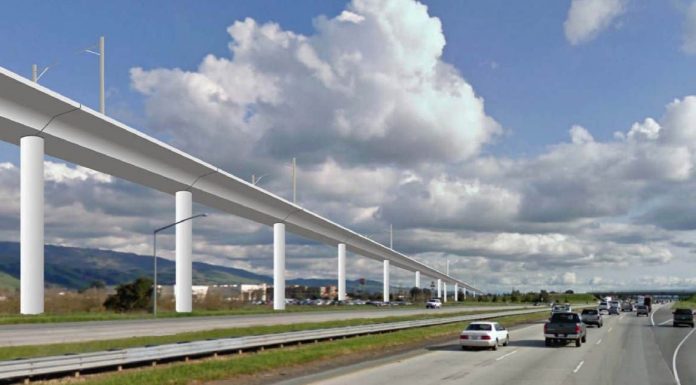Guest view: Let voters decide on commercial zoning classification
The Morgan Hill City Council voted to ignore a lawful petition signed by more than 10 percent of the registered voters in this city demanding that the city council either reverse its proposed zoning amendment (proposed Ordinance No. 2131-NS) that would unnecessarily further deplete our already disappearing industrial land, or else put that question on the ballot for the voters to decide in a referendum election. The right to decide questions of public interest in a democratic vote is guaranteed under the California State Constitution and built into the very fabric of our elections laws. It is the reason that most ordinances do not go into effect for at least 30 days after they are approved by the city council. This is the time period during which concerned voters can file their objections to a proposed ordinance, but this city council is trying to deny our citizens their constitutional right to vote on this issue.The Morgan Hill Hotel Coalition works hard to make the hospitality industry better for all. The hotels and motels in Morgan Hill, many of which are family owned businesses that span generations, have generated approximately $10 million in transit occupancy tax over the past five years. The Coalition welcomes all who care to join the hospitality industry on a level playing field.The Coalition publicly supported both the Stone Park Capital hotel project (La Quinta Inn) and development of a new downtown boutique hotel. Each of those projects are situated on lands that were zoned for commercial use (which allows hotels) when the projects were proposed. These two projects alone will increase our city’s available higher end hotel room inventory by nearly 40 percent.We advocate for sustainable growth so our local economy is less susceptible to boom/bust cycles that have crippled us in the past.Industry means jobs—good paying, manufacturing jobs that will benefit the citizens of our community as a whole, now and in the future. So we need to carefully protect our industrial land to make sure that there will be a place for people to create jobs when our children become working age. According to the City of Morgan Hill’s own statistics, there is only about a 19-year supply of industrial land remaining within the city and there is currently a miniscule 3 percent industrial property vacancy rate in Morgan Hill.The Morgan Hill Hotel Coalition objected to the proposal to take industrial land and convert it to commercial use just so an out of town developer can build another hotel. More than 2,000 voters in Morgan Hill agreed and showed their support by signing the petition demanding that the city council repeal the proposed zoning change or put it on the ballot for the voters to decide. The city council should have allowed the voters to decide.Asit Panwala is a spokesperson for the Morgan Hill Hotel Coalition. His father owns Comfort Inn on Condit Road in Morgan Hill. The MHHC has started a group on Facebook titled "Morgan Hill Speaks," which encourages residents to become more involved in important land use issues and other local government business.
Guest View: MH girl rides the Delta River Route
Kirsten Tapley, 6, of Morgan Hill, got a rare treat when she
Opinion: High Speed Questions
The City of Morgan Hill asked residents for questions and comments on the California High Speed Rail Authority’s plans to build the 200-mph-plus train through or around the city. Below are some of those comments and questions, which city staff presented to the Morgan Hill City Council at the Nov. 16 meeting and are available to view on the city’s website. The council plans to submit a comprehensive list of questions about the HSR’s potential impact on Morgan Hill, in hopes of influencing the state agency’s choice on its preferred route alignment. Concerned residents can still submit questions and comments to the city by visiting morganhill.ca.gov and searching for High Speed Rail, which will bring users to a page with information and forms for submitting input. See related story for more information on the HSRA’s four alignment alternatives. Comments below are edited for length and clarity.Has there been consideration of tourism and quality-of-life impact when considering a final alignment choice, or is it purely economic? An HSR alignment through downtown Morgan Hill would destroy the character of this unique area.Andrew SterianWhy would the alignment not occur in the most obvious location—along with the existing railroad line?? The home value and quality of living in the Diana neighborhood will be severely impacted should the rail be put in along the west side of 101. My house will not be one purchased in eminent domain but would be in the first row of houses adjacent to the planned location on the west side of 101. The rail will without a doubt create a negative impact on my home’s value. Please consider what will happen to home values in the entire Diana neighborhood should the west side (alignment) be chosen. Why would you add a rail line in a neighborhood instead of in a downtown area where it makes sense. The community should share the burden of the rail's addition, not the homeowners, who already live next to 101 to begin with! Please do what you can to prevent loss of the investment we made when purchasing a home in Morgan Hill.Dana MortonWill there be any tall redwood trees planted to on both sides of the raised viaduct to mitigate noise and visual impact?William CarlsonWhat can the city of Morgan Hill do to stop this huge boondoggle?Mark HinkleHow will the HSR determine which properties need to be taken? How will the HSR ensure that there is no loss to the residential properties that are not strictly needed for right of way access but would be close to the proposed route? Will the HSR purchase enough residential properties alongside the track to ensure that there is a cushion of green space and thereby ensure that the remaining home's property values are not impacted? Will anything be done to beautify the space between the HSR and the residential areas around it? Will homeowners who wish to move for no other reason but that the HSR will be constructed in their neighborhood be reimbursed realty fees and any loss in property value due to the HSR being present or the need to disclose its future presence? Will the HSR work with the City to make sure that no resident is financially hurt?Susan EassaHow many trains will be scheduled to travel through Morgan Hill on a daily basis?Lauri QuigleyWhy wouldn't the money be spent on widening and fixing our freeways. We can hardly move around on the freeway. We keep being told there’s no money but you can build this and it won’t even be used for many people.Traci ValdezIf the East or West 101 routes through Morgan Hill are chosen, how will you mitigate impact on Coyote Creek Park and Trail including impacts to wildlife, waterfowl, and birds that call that area home? In addition, how will you maintain the current quiet and peaceful rural environment for hikers, walkers and bicyclists?Debra UllmannAre there plans or intentions to provide bus service to the San Jose and Gilroy terminals? If so, will fares be included in the cost of HSR tickets? Will the residents of Morgan Hill be provided with lower ticket rates? Will VTA bus schedules be aligned with train schedules? Will VTA and HSR offer interchangeable tickets? How about with BART, ACE and Caltrain? Will HSR work with local companies and schools to provide lower ticket rates?Yudhvir SidhuWill there be a study about noise pollution effects in Morgan Hill?Pravin LathigaraI am concerned about the increased traffic downtown and safety if the high speed train goes along Monterey highway and through downtown Morgan Hill. How will pedestrian traffic be protected? How often are these trains projected to run?Jeanne Wise
Guest View: ‘Trial by fire’
My first year in the State Assembly has been quite a year. Many
A bright vision for Morgan Hill this year and beyond
As mayor of Morgan Hill one of the most enjoyable aspects of my
Glancing Back While Moving Forward
Recently, a newspaper article informed that the projected average life span for a person born this year is 76.2 years.
Guest view: Include Latinos in economy rebuilding
California’s Latino community is experiencing the brunt of the Covid-19 pandemic’s impact. About 50 percent of the state’s more than 62,000 cases, and 33 percent of its total deaths are Latino, more than any other racial or ethnic group in California.
Guest view: Return to Good Governance Nov. 6
For an organization such as a school board to be successful it must be diligent in establishing clear objectives, it must strive to continuously improve and it must maintain ethical and legal standing in the community. The essential core or “heart” of such an...







